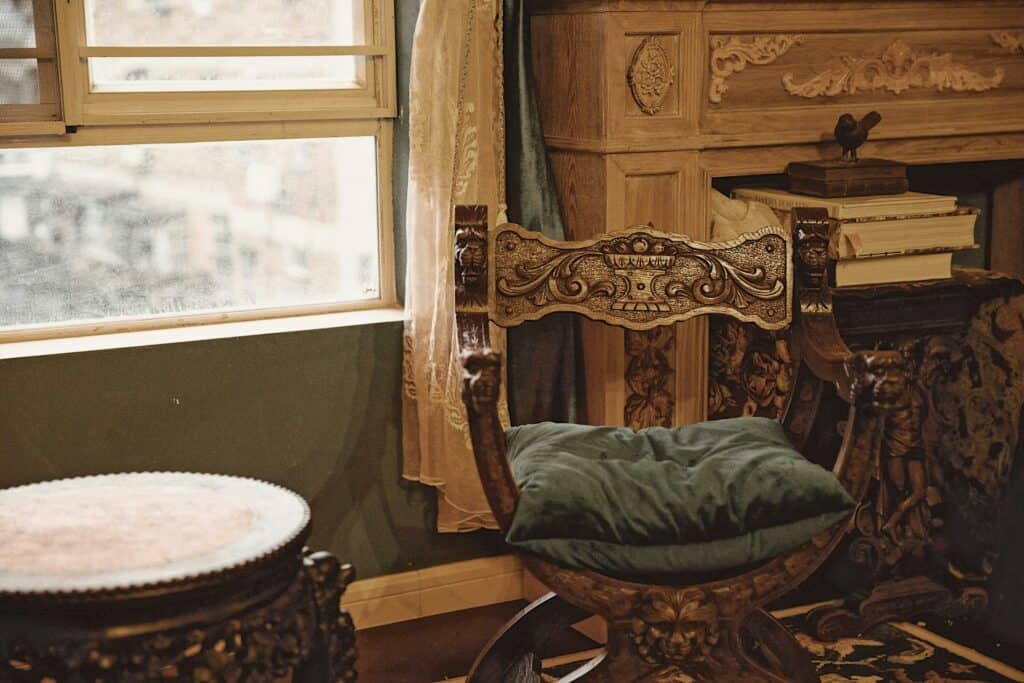Today, sustainability is paramount and it’s important that we understand that every decision we make has the potential to impact our planet. Environmentally friendly antique furniture is an often-overlooked area where we can make a significant difference to our carbon footprints. Opting for antique and vintage furniture is an effective way to embrace green living, combining style, history, and sustainability.
The Environmental Impact of Modern Furniture
To appreciate the benefits of antique furniture, it’s important to understand the environmental cost of modern furniture production. Most contemporary furniture is made using materials and processes that are actually harmful to the environment. Here are a few key issues:
Deforestation: A significant amount of modern furniture is made from wood harvested in unsustainable ways. This leads to deforestation, which contributes to habitat loss, carbon emissions, and climate change.
Chemical Pollution: The manufacturing process for furniture often involves harmful chemicals. These include volatile organic compounds (VOCs) found in paints, stains, and adhesives, which can contribute to indoor air pollution.
Waste: The fast furniture trend, characterised by inexpensive, mass-produced items, has led to an increase in furniture waste. These pieces are often not built to last and end up in landfills within a few years.
The Green Benefits of Antique Furniture
Antique furniture, by contrast, offers numerous environmental benefits that make it a compelling choice for the eco-conscious consumer. Here’s why:
Sustainability: Antiques are the epitome of sustainable living. By purchasing a piece of furniture that has already been made and used, you’re giving it a second life and preventing the need for new resources to be consumed.
Quality and Longevity: Environmentally friendly antique furniture is built to last, crafted with high-quality materials and superior craftsmanship. These pieces can endure for generations, reducing the need for replacement and the associated environmental costs.
Reduction of Waste: Choosing antique furniture helps reduce waste by keeping items out of landfills. Every piece of furniture that is reused rather than discarded is one less item contributing to our growing waste problem.
Chemical Safety: Many antique pieces were made before the widespread use of harmful chemicals in furniture production. This can mean fewer toxins in your home, contributing to a healthier living environment.
The Charm and Character of Antiques
Beyond their environmental benefits, antique furniture pieces are celebrated for their unique charm and character. Each piece tells a story, offering a tangible connection to the past. This historical value adds a depth and richness to your home decor that modern pieces often lack. Additionally, antique furniture can serve as a focal point in your home, blending seamlessly with both traditional and contemporary designs.
How to Integrate Antique Furniture into Your Home
If you’re interested in integrating environmentally friendly antique furniture into your home or business space, the team at Village Vintage have put together some tips to help you get started:
Start Small: If you’re new to antiques, start with smaller pieces like side tables, chairs, or decorative items. This allows you to gradually incorporate antiques into your home without overwhelming your space.
Mix and Match: Don’t be afraid to mix antique pieces with modern furnishings. A blend of old and new can create a stylish and eclectic look. The key is to find a balance and ensure that the pieces complement each other.
Focus on Quality: When purchasing antique furniture, focus on quality over quantity. Look for well-made pieces that are in good condition. While some wear and tear is expected, avoid items that require extensive repairs unless you’re prepared for the restoration work.
Research and Learn: Educate yourself about different periods and styles of antique furniture. Understanding the history and craftsmanship behind the pieces can enhance your appreciation and help you make informed purchasing decisions.
Shop Sustainably: When shopping for antiques, consider reputable dealers, estate sales, and auctions. These venues often have knowledgeable staff who can provide information about the provenance and authenticity of the pieces.
Our In Person Viewings
At Village Vintage, our team are always on hand to help you. Located on the Essex and Suffolk border, if there is a piece you’re interested in, we offer viewings at our secure storage facility, Monday-Friday by appointment only. This way, you can physically see the item, talk to our professional team and ask any questions you may have.
Furthermore, our customers are welcome to collect items in person, or we can organise both UK and international delivery. We want your purchasing experience to be as seamless as possible for you, so we give you the option for ultimate convenience.
Get in Touch
If you are looking to switch up your décor, choosing environmentally friendly antique furniture is a great alternative to shopping new, adding character to your space with pieces that were made for longevity. As we strive to live more sustainably, incorporating antique and vintage furniture into our homes offers a beautiful and practical solution.
Here at Village Vintage, we are passionate about delivering the best results for our valued customers. If you’re looking for unique and sustainable vintage pieces and antique furniture, we’d love to help! Simply get in touch with us by filling out our contact form and one of our friendly team will get back to you. Don't forget to join our community on Facebook.






